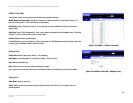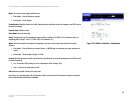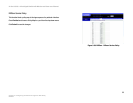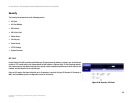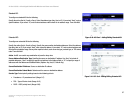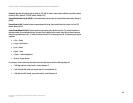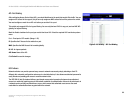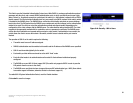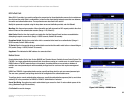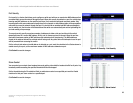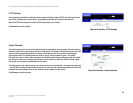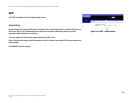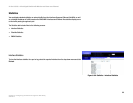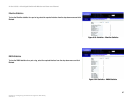
61
Chapter 5: Configuring the Switch through the Web Utility
Security
24-Port 10/100 + 2-Port Gigabit Switch with Webview and Power over Ethernet
This Switch uses the Extensible Authentication Protocol over LANs (EAPOL) to exchange authentication protocol
messages with the client, and a remote RADIUS authentication server to verify user identity and access rights.
When a client (i.e., Supplicant) connects to a switch port, the switch (i.e., Authenticator) responds with an EAPOL
identity request. The client provides its identity (such as a user name) in an EAPOL response to the switch, which
it forwards to the RADIUS server. The RADIUS server verifies the client identity and sends an access challenge
back to the client. The EAP packet from the RADIUS server contains not only the challenge, but the authentication
method to be used. The client can reject the authentication method and request another, depending on the
configuration of the client software and the RADIUS server. The authentication method must be MD5. The client
responds to the appropriate method with its credentials, such as a password or certificate. The RADIUS server
verifies the client credentials and responds with an accept or reject packet. If authentication is successful, the
switch allows the client to access the network. Otherwise, network access is denied and the port remains
blocked.
The operation of 802.1X on the switch requires the following:
• The switch must have an IP address assigned.
• RADIUS authentication must be enabled on the switch and the IP address of the RADIUS server specified.
• 802.1X must be enabled globally for the switch.
• Each switch port that will be used must be set to dot1X “Auto” mode.
• Each client that needs to be authenticated must have dot1X client software installed and properly
configured.
• The RADIUS server and 802.1X client support EAP. (The switch only supports EAPOL in order to pass the
EAP packets from the server to the client.)
• The RADIUS server and client also have to support the same EAP authentication type – MD5. (Some clients
have native support in Windows, otherwise the dot1x client must support it.)
To enable 802.1X System Authentication Control, mark the Enable checkbox.
Click submit to save the changes.
Figure 5-44: Security - 802.1x Users



